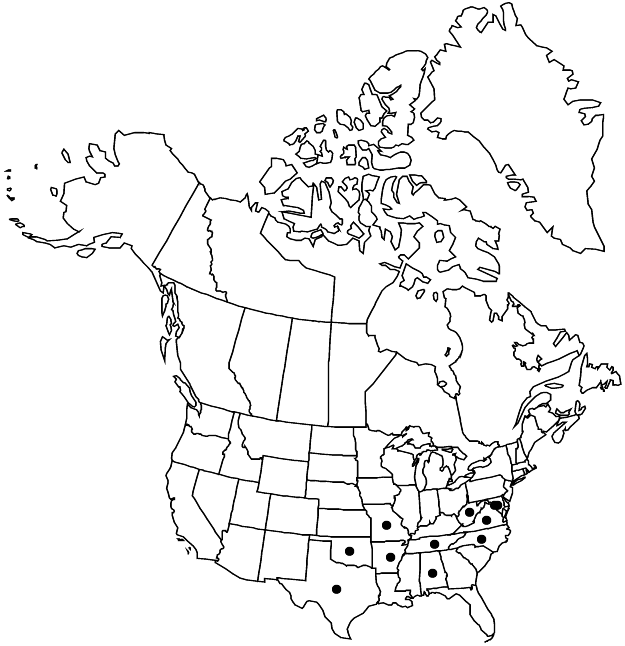Difference between revisions of "Paronychia virginica"
Syst. Veg. 1: 822. 1824.
FNA>Volume Importer |
FNA>Volume Importer |
(No difference)
| |
Revision as of 20:10, 24 September 2019
Plants perennial; caudex branched, woody. Stems procumbent, branched from base, hirtellose; flowering stems 7–45 cm; sterile stems 3–10 cm. Leaves: stipules narrowly lanceolate, 6–13 mm, apex acuminate, often deeply cleft; blade linear, 10–30 × 0.4–1 mm, leathery, apex short-spinose, minutely hirtellous to puberulent. Cymes terminal, 3–10+-flowered, somewhat open to compact, often forming clusters 6–30 mm wide. Flowers 5-merous, narrowly ovoid, with enlarged hypanthium and calyx tapering gradually distally, 2.8–5.1 mm, glabrous to puberulent, especially proximally; sepals brown to yellowish, midrib and lateral pair of veins prominent, lanceolate to oblong-lanceolate, 2–2.9 mm, leathery to rigid, margins whitish, 0.1–0.2 mm wide, papery, apex terminated by awn, hood rounded-triangular, awn curved outward, green to red-brown, ± conic, 0.4–1.1 mm, scabrous, distinct spine absent; staminodes filiform, 0.8–1 mm; style 1, cleft in distal 1/5, 1.2–2 mm. Utricles ovoid to obovoid, 1.8–2 mm, smooth, glabrous.
Phenology: Flowering summer–fall.
Habitat: On or among rocks
Elevation: 700-1300 m
Distribution

Ala., Ark., D.C., Md., Mo., N.C., Okla., Tenn., Tex., Va., W.Va.
Discussion
Cory established var. scoparia for the western populations to reflect the disjunct distribution. Paronychia dichotoma (Linnaeus) Nuttall (1818), sometimes applied to this species, is a later homonym of P. dichotoma de Candolle (1805); see E. L. Core (1940).
Selected References
None.